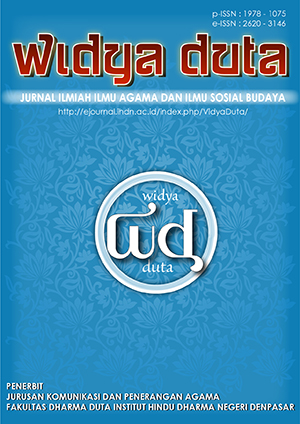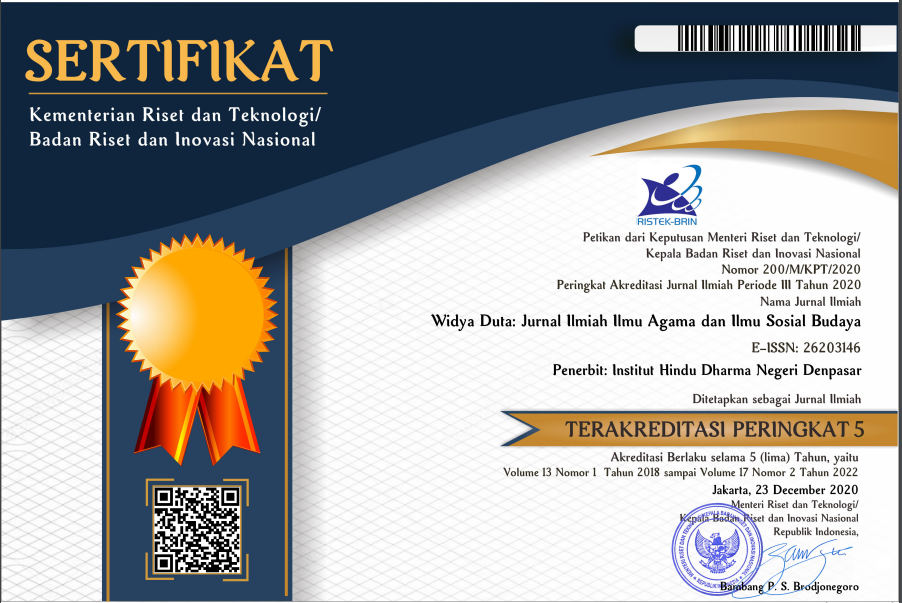POLA KOMUNIKASI TRANSENDENTAL DALAM KONTEKS PROSESI NGEREH BAGI TAPAKAN BHATARA DI BALI
DOI:
https://doi.org/10.25078/wd.v16i2.215Keywords:
The Bhatara's Tread, Transcendental Communication, The ProcessionAbstract
This research was designed qualitatively descriptively because the field phenomenon that wanted to be expressed was in the form of subjective experience and knowledge of the informants, then analyzed to obtain intersubjective conclusions. Aims to identify and interpret field data based on the view of transcendental communication. Postpositivistic paradigm with a phenomenological approach to communication. The material object of the procession is ngereh for the monks in Bali, while the formal object is the application of the concept of transcendental communication. The use of qualitative design means that this research emphasizes more on reality with interactive, plural dimensions, and the existence of an exchange of social experiences that can be interpreted individually. Hinduism (Bali) is a tantrayana religion. All activities of practicing tattwa and morals are in the form of religious events, which use the traditional ritual. One of the religious events, which contain the practice of divinity is the use of statues/pretima in the form of a temple bhatara which is worshiped in temples in Bali and several temples outside Bali. Before becoming a priest, a newly created pretime/barong/rangda, a purification ritual (sacralization) must be carried out to get the panugrahan as a priest's tapakan. This chilling procession for the bhatara's tread is the object of this research, and four important things have been found. First, at each
stage of the ritual a transcendental communication event occurs. Second, the transcendental communication component in the context of the ngereh procession at the bhatara's footprint in Bali includes the procession actors (pengereh) and supernatural/supernatural powers (who act as communicators and communicants alternately). Mantras or sehe that are
spoken and mudras that are made mystically (act as messages), as a means of upakara as a yantra or communication medium. Third, the context of transcendental communication that can be identified for the tapakan bhatara is: the context of communication when the mangala/stakeholder/sangging performs the prayascita ceremony. when the mangala/stakeholder/sangging performed the ngatep and mintonin ceremonies, and when the mangala/stakeholders/sangging performed the pasupati and ngereh ceremonies. The four effects of transcendental communication include cognitive experience/knowledge, affective experience/knowledge, and behavioral experience/knowledge.





